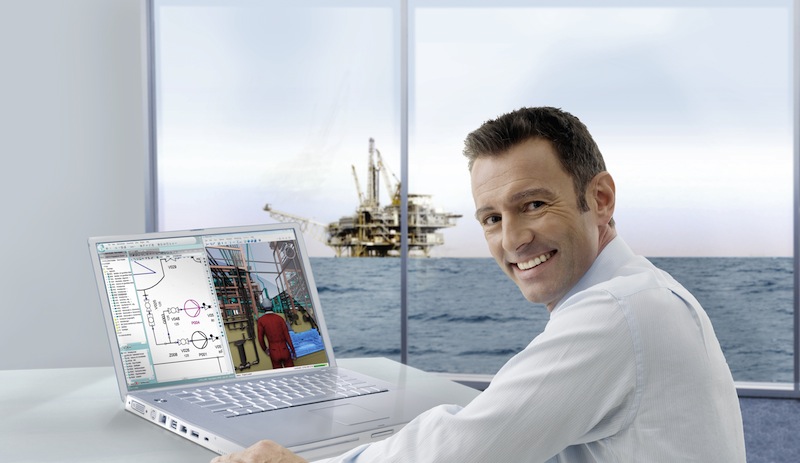BOSTON – The Siemens executive team heading up the Comos software package invited this reporter to a briefing yesterday to talk about where the Comos software suite is heading in terms of 3D data capture and how it will benefit from the acquisition of VRContext, which was announced a couple weeks back.
Over the course of about 90 minutes, they outlined a philosophy of “object-based” engineering that would ideally allow all of the different engineering teams to share a single software platform in the design stage, and for that same software platform to be used by the operations and maintenance team after handover, providing consistency and minimizing loss of data and institutional knowledge.
The VRContext acquisition is vital, they said, because it creates a visualization element that provides a window into the vast stockpile of data surrounding any facility in the process industry. “As an organization, [Siemens PLM] has an amazing heritage with 3D,” said Matthew McKinley, VP-Americas for Comos, and who came to Siemens with the purchase of Innotec and the Comos software suite in October 2008. “Our business [at Comos]has been historically schematic, and 3D was not the main focus area for us. But we’re recognizing that there’s now an expectation from the users to look to exploit these technologies. So we made the acquisition of VRContext, whose technology really brings the 3D element into our portfolio for aiding decision support.”
Comos doesn’t have a 3D authoring engine, but PLM does and Siemens is committed, the group said, to interoperability and the ability to accept models and data from as many software platforms as possible. The company supports both ISO 15926 and it has developed the JT open 3D data visualization format that’s now being accepted by the likes of Bentley and AVEVA.
VRContext and its ability to help visualize 3D data will be most helpful to the owner operators, they said, who have a large pool of people that need to interact with 3D data, but not necessarily with complex modeling tools.
McKinley offered the example of a European oil-exploration company building an offshore platform. Instead of flying them to the fabrication site where the platform is being constructed to train the workers who would staff it, they trained those workers on the 3D model via VRContext’s Walkinside product and then did the final training on the platform as it was being transported on the ocean. “Now, instead of 12 months away from home for training, it’s three months,” Said McKinley. “They reduced the amount of learning time and the workers ended up better prepared.”
Comos VP Andreas Geiss said the software suite can be a way for customers to get their arms around brownfield environments where consistent documentation doesn’t exist. He mentioned an oil rig taken over by a Nordic operator: “When we looked at it, there was a huge gap between paper documentation and reality,” he said. “So they decided they needed to take the pain to get all the data on one system, or to get at least the data into an electronic system that they could share to other systems.”
Further, he continued, “maybe you don’t even have a consistent 3D model, and you have to go in there with laser scanning and digest this.”
Having a 3D visualization tool like VRContext is a way to make use of that 3D model and bring all of that data into one place in Comos where it’s easy to interface with it. Users can navigate to the object in question – maybe it’s a pump, or a valve, or a specific pipe – and then see what data is associated with that object and start to do a deeper dive.
“We can bring in a PDMS model,” said McKinely, “which is as developed as the as-constructed level of detail that would be in PDMS. Then they may have highly complex models that have come from, say, NX. The pump in PDMS is one level of detail that’s perfect for construction and familiarizing through the walk through. You get the basic shape and representation.
“But that pump doesn’t really look like that … Then we right click and go into a more granular detailed view and how would I take it apart, where are the filters, the bolting details, the next level of detail.
“In combination with that,” McKinley continued, “if I know that this was handed over at as-commissioned, now I have to wonder, ‘Is this the real thing?’ So, if we’ve done some surveying, whether laser or photogrammetry, I bring that in.”
That follows this object-orientation that Comos has as what VP and GM-Americas Joseph Krol calls a “defining characteristic.”
“The object sits in the center of everything we think about,” Krol said. “We’re not a series of solutions that are tied together. It’s a single environment.”
To that end, while VRContext is for now a separate system, the plans are in motion for its abilities to be directly integrated into Comos. “That’s definitely going to happen,” McKinley said. “We have some proto-types running right now embedding some of those technologies directly into our solution.”






